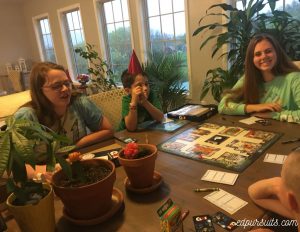Learn With Phonics
So the most important part about teaching your child to read is to teach them to read using phonics and help them practice regularly. Any reading program that uses phonics will be fine for the most part. Some might be more fun or efficient than others, but they all should work.
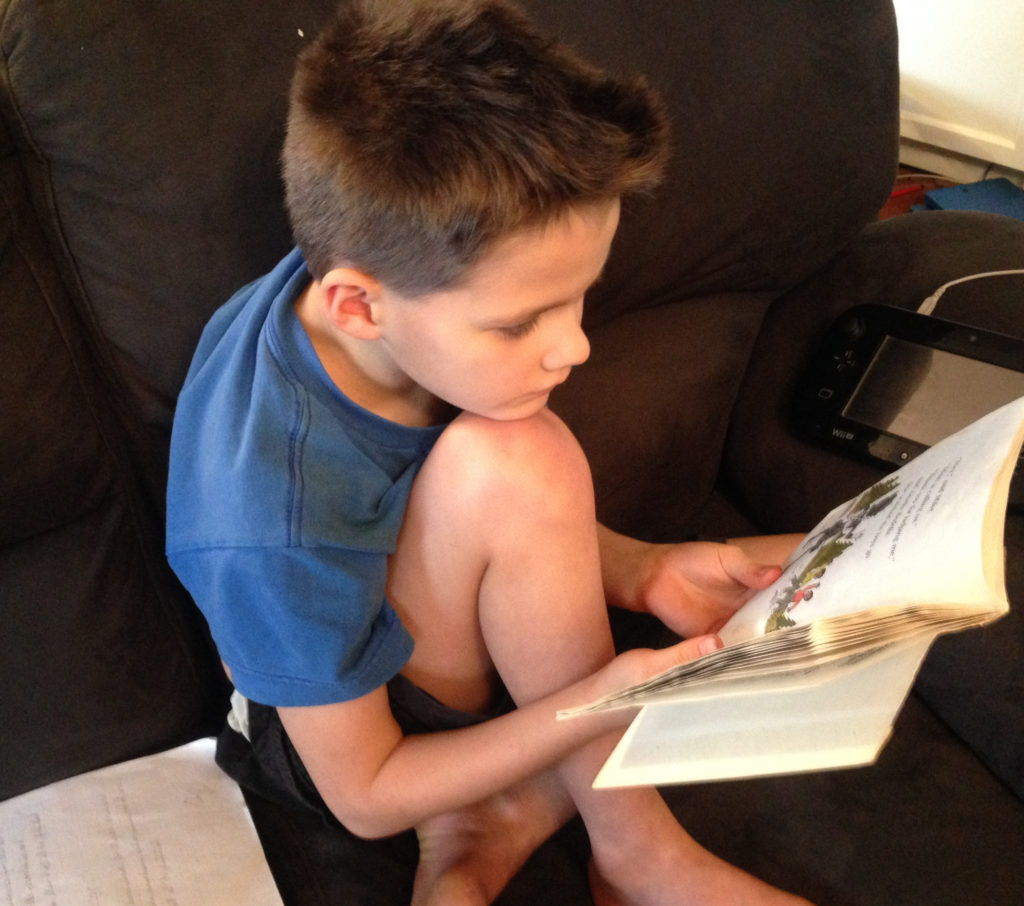
It was sometime in the 70s that some reading programs were introduced which did not use phonics. My aunt was one of the children who learned to read this way and she told me that if she has never seen a word before she can’t read it- so street names and other things like that are still really hard for her.
If you didn’t learn to read with phonics, this could be a great learning experience for you too! I suppose a non phonetic program could work well for some people though, especially if they have dyslexia or some other learning challenge- so as always- do what works!
I know there are some online resources that are really good these days, and I’m sure other types of resources that are great too. This post doesn’t cover every great resource that’s out there. The purpose of this post is to give you a couple resources that will work very well for most kids. That being said though, don’t be afraid to try lots of resources, and to find things that work well for you, your kids and your situation.
Read and practice with your child regularly so you can make sure they are actually sounding out the words and progressing with whichever resources you’ve chosen.
1- Learn the Alphabet – names and sounds
The first step to reading is to learn the names and sounds of the letters of the alphabet. This can be done with flashcards and alphabet games, but I have found different videos to be the fastest and most effective. The Letter Factory by Leap Frog is our family favorite. One of my boys learned the entire alphabet and their sounds at age 3 after watching the video just 3 times – it was awesome!! That video has saved me a lot of time in teaching the alphabet to the other kids! My kids would also “play” letter factory. They really loved it. Click on the link below:
The only downside to that video is that they only show the capital letters, so you will need to make sure your child learns the lower case letters also, and which lower case letters go with which upper case letters. The Phonics Game kit has a couple of games to make this fun- some matching games, flash cards and more- I’ll talk about more about that further down in this article. I’m sure there are online resources for this as well.
If nothing else- print off the following pages – one has the upper and lower case letters together – and also the cursive letters! The other just has the lower case letters. You can point to different letters as you sing the alphabet song and test your child on the names and sounds easily. You can say the name of a letter and have them point to the one you say. They will love showing you how much they know!
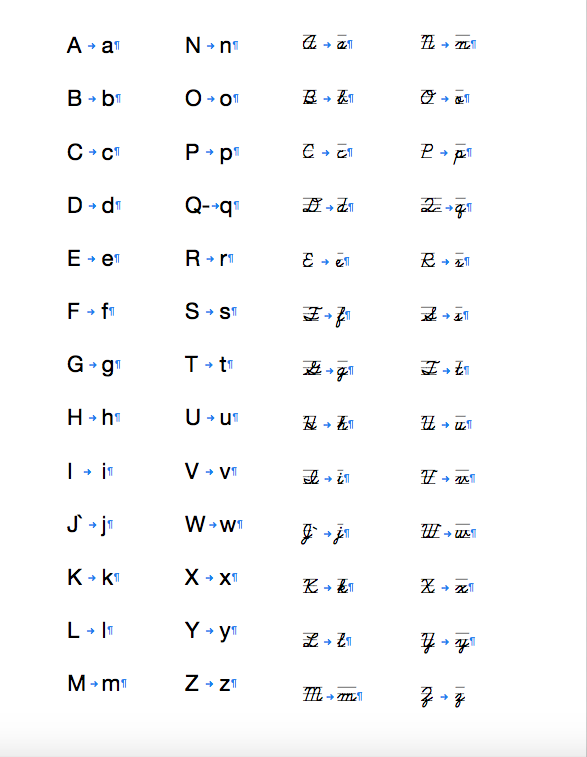
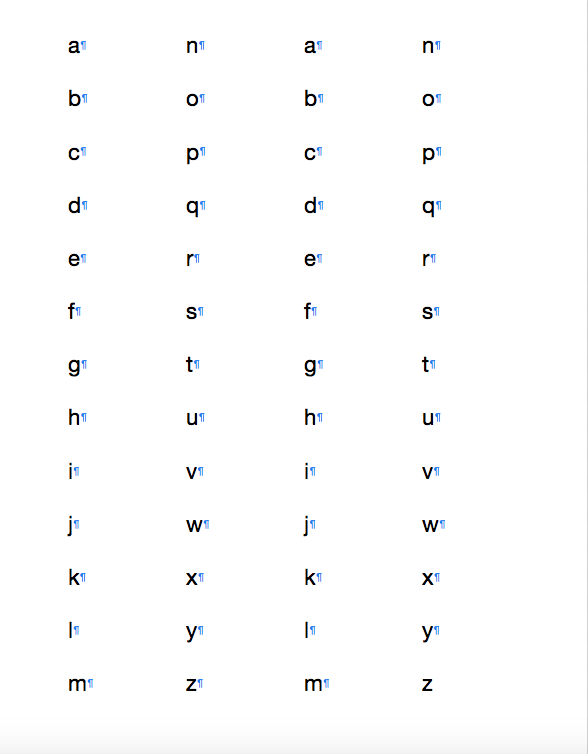
2- Learn the Vowels- long and short sounds
The next thing to do is point out that there are 5 special letters which have at least 2 sounds- long and short. You can sing the names of the vowels to the tune of B-I-N-G-O, just use A-E-I-O-U in place of B-I-N-G-O. The song goes like this:
A-E-I-O-U, A-E-I-O-U, A-E-I-O-U and vowels have names too! (Singing the long vowel sounds as you point to each letter)
A-E-I-O-U, A-E-I-O-U, A-E-I-O-U and vowels have sounds too! (Singing the short vowel sounds as you point to each letter)
Here’s a sheet you can download and print to use for this activity:

3- Learn to Blend the Sounds
Once the kids know the letters and the sounds, they are ready to sound out words. The best way to do this is to say the word very slowly with the individual letter sounds being drawn out so the kids can hear the separate sounds running together. Use small simple words first like me, he, she, go, so, cat, hat, sat, bat, sit, pit, wit, met, pet, wet, can, pan, bed, sun, fun, hot, cot, etc.
Say them slowly, and then say them quickly. Let the kids see if they can guess which word you are saying slowly and then practice saying the words slowly and quickly. I learned this technique from Teaching Your Child to Read in 100 Easy Lessons. They recommended holding pointing the child’s finger along to each letter as you read it both slowly and quickly. That is the good thing I got from that book, but otherwise, I didn’t find it useful for my kids.
You can practice this sound blending skill anytime you are with your kids – while driving, making dinner, picking up toys, etc. It’s so fun when they start to get it. Make it into a game. “Let me see if you can figure out this one!” They feel so proud when they can figure out the word. Soon you can give them 3 sounds and see if they can blend them together themselves to make a word. Once they can blend sounds together, they will be able to start reading those same simple words. Show them C A T and have them say each sound slowly and then quickly until they figure out the word. This, I think, is the most gratifying part of teaching a child to read.
Here is a worksheet you can use to practice pointing and reading the words slowly and then quickly:
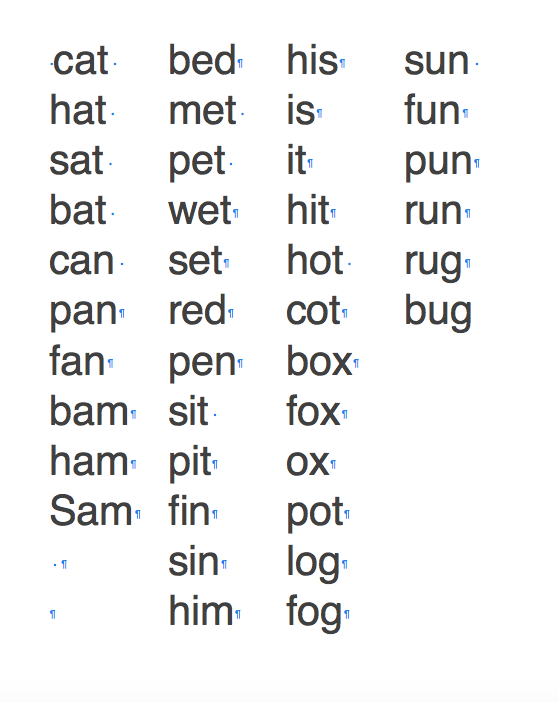
4- Follow Your Reading Curriculum
This is also when I start a formal reading curriculum. My curriculum of choice is the The Ordinary Parent’s Guide to Teaching Reading by Jessie Wise and Sarah Buffington. The lessons are laid out in a very simple format introducing one new concept plus practice for that concept with each lesson.
It starts with the alphabet which we skip, because we already have learned the letters and their sounds, and then it moves to simple short vowel sound words, consonant blends, long vowel sounds, diphthongs, etc. all the way through multiple syllabic and compound words. There are no pictures, so the kids have to sound out the words, there is no guessing from the pictures.
It usually takes us about 2 -3 years to finish the book, but the kids are reading on their own by about halfway through. I like going through this book because it is comprehensive and then the kids will at least have familiarity with the different words. Reviews and games are built in also.
5- Practice and Patience
Once they can sound out words, it is really just a matter of learning and practice. BOB books are very simple stories which use a lot of 3 letter words. in addition to the “blue” book as we call The Ordinary Parent’s Guide to Teaching Reading, I also have them read Bob books and McGuffey readers whenever we read. The amount of reading they do depends on their ability.
If they are just starting, it is a tiny amount. If they have more confidence and have read the book before, then I will have them read more. The idea is to challenge them without overwhelming them.
Below are links to the McGuffey readers on kindle- this is the version you want which includes the original illustrations. And links to the Bob books- I’m not sure if this is the same set I have, because when I bought them there were only 3 sets, now there are 5 plus some extras, so you will just have to decide what you want to do.
I included patience in the title, because this stage takes a lot of patience. The kids read very slowly at first and sometimes I wonder if I will make it through. But it’s important to be patient, to encourage the kids, praise them when they do well and finish their lesson. And keep reading with them consistently. Reading 5 minutes everyday will be way more effective than reading 30 minutes once a week.
6- Happy Phonics
We will also play reading games with the Happy Phonics program from Latter-day Family Resources I purchased years ago and love. It is full of games and helpful instructions for teaching reading with phonics. Not only does it include games, but it also has spelling lists, flash cards and little reading books and much more. It’s totally worth the money, Imo!! You can read my review of that here (link to come). This program is especially helpful for any area in which you find your child needs more practice. there will certainly be a game which focuses on the aspect your child may be struggling with – and it’s fun, so you can even use the games as a reward. Win/ win!!
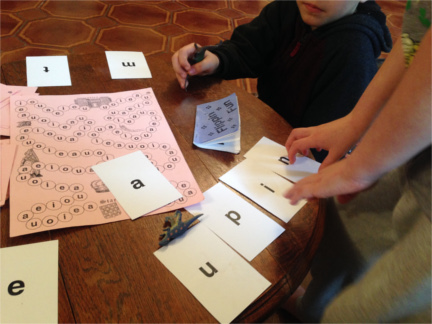
7- Early Reading Books
Once the child has mastered Bob books we move on to early readers like Little Bear and Amelia Bedelia. I will read a page and then have them read a page, until they read fast enough to do it all on their own. The important thing is to just keep on going!
By the time we’ve finished a bunch of early reader books, the kids are usually ready for early novels like the Treehouse Book series. I will read a page or a paragraph and have them read a page or paragraph until they are confident readers, reading and understanding what they read. Then they have the requirement to read on their own for 20 minutes a day from an early reader novel or even children’s books like the Berenstein Bears I allow to count for that 20 min.
As they start to enjoy reading more, they start to read more and more on their own. Then I will choose books for them to read that I require that will challenge them a little. So that’s it!!
Be Consistent
Once they are able to pretty much read on their own, it is simply a matter of practicing which can really take a lot of patience for the teacher because the new reader will read really slowly at first. You will also need to help them with words they don’t know- just sound it out for them and move on. The curriculum and phonics games are the time to break down the words, reading practice is just reading practice. It is wise to stop before you are both too frustrated and just too tired. Even if they only read a couple of words at first. Focus on the progress, not the amount they are able to do, and keep moving forward.
Consistency is key. Doing a little bit everyday is a lot more effective than trying to do a whole bunch in one day. Every day gets easier and eventually these little readers aren’t going to need you to sit with them anymore. It is one of those training issues- do it right when they are young and reap the benefits for years to come!
How Much To Read Each Day
So I will have the kids read in the “blue” book half a lesson a day or up to 3 lessons a day towards the end depending on their ability. I push them enough to be challenged, but not so much that they are frustrated. I have also found it helpful to let them see exactly how much they will have to do before they start and to give rewards immediately as needed. If they could have done more, then I will have them do more the next day until they are able to do about 15 minutes of reading with me each day until they can do it on their own.
My twins are reading chapter books on their own now, so they just read with me 3 lessons in the “blue” book and 2 lessons from McGuffey twice a week, plus 20 minutes of daily reading on their own. The kindergartener reads about half a lesson 4 days a week plus a Bob book and phonics games. My oldest would read McGuffey to me while I cooked dinner, I basically wanted to listen to her read out loud just to make sure she was pronouncing words correctly, but she had finished the “blue” book (Ordinary Parents Guide book) long before she was to that level.
Rewards! Motivation!
I bought a set of special colored pencils and my first 3 kids got a pencil every time they finished a lesson the “blue” book. By the time they earned all 20 pencils they were used to reading a lesson and it wasn’t such a big deal to them. All the kids got a pocket knife when they completed the entire book. My younger kids earned screen time minutes for finishing a lesson and/or could watch an educational show or fun show as soon as we were done. It’s amazing how much better the kids do when they are motivated.
Conclusion
As the beginning readers start to enjoy reading more, they start to read more and more on their own. It is a great accomplishment!! And they are on their way! I hope this post has been useful to you!
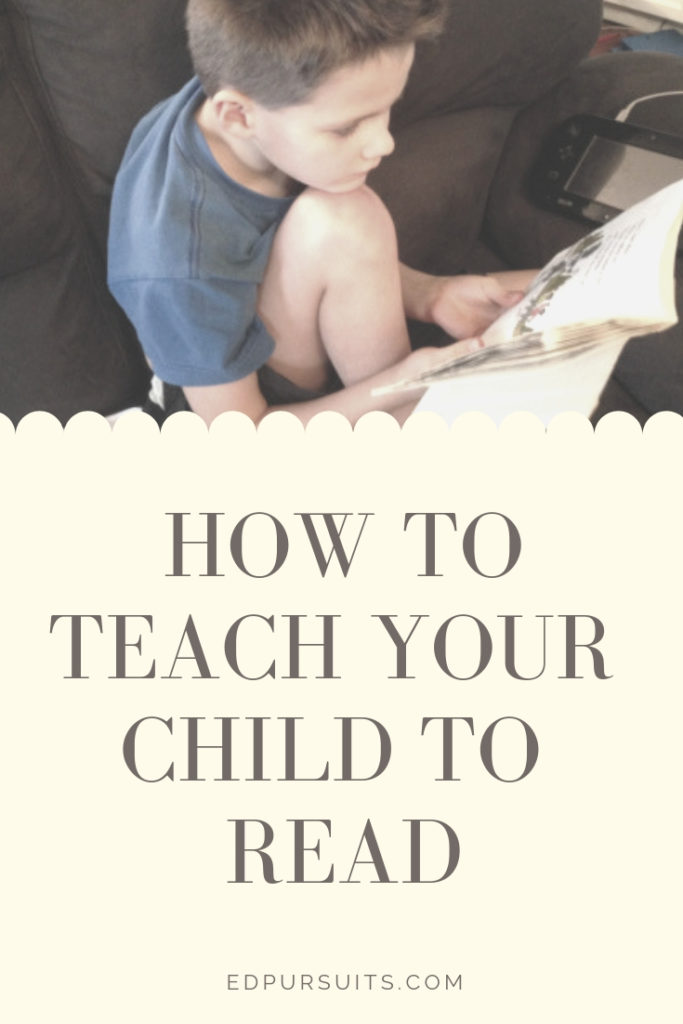
What have you found to be helpful in teaching kids to read?

